03 Mar Kashidakari – The Gorgeous Embroideries of Kashmir
Embroideries of Kashmir: A couple of weeks back, I shared a breathtaking video made by the Google Arts & Culture Institute on the Sozni Embroidery from Kashmir. The video gathered a lot of love and likes on Facebook and Instagram.
The valley of Kashmir with its beautiful flora and fauna is resplendent with nature. Therefore the embroideries or textile designs from Kashmir have always been largely inspired by the floral beauty of the valley.
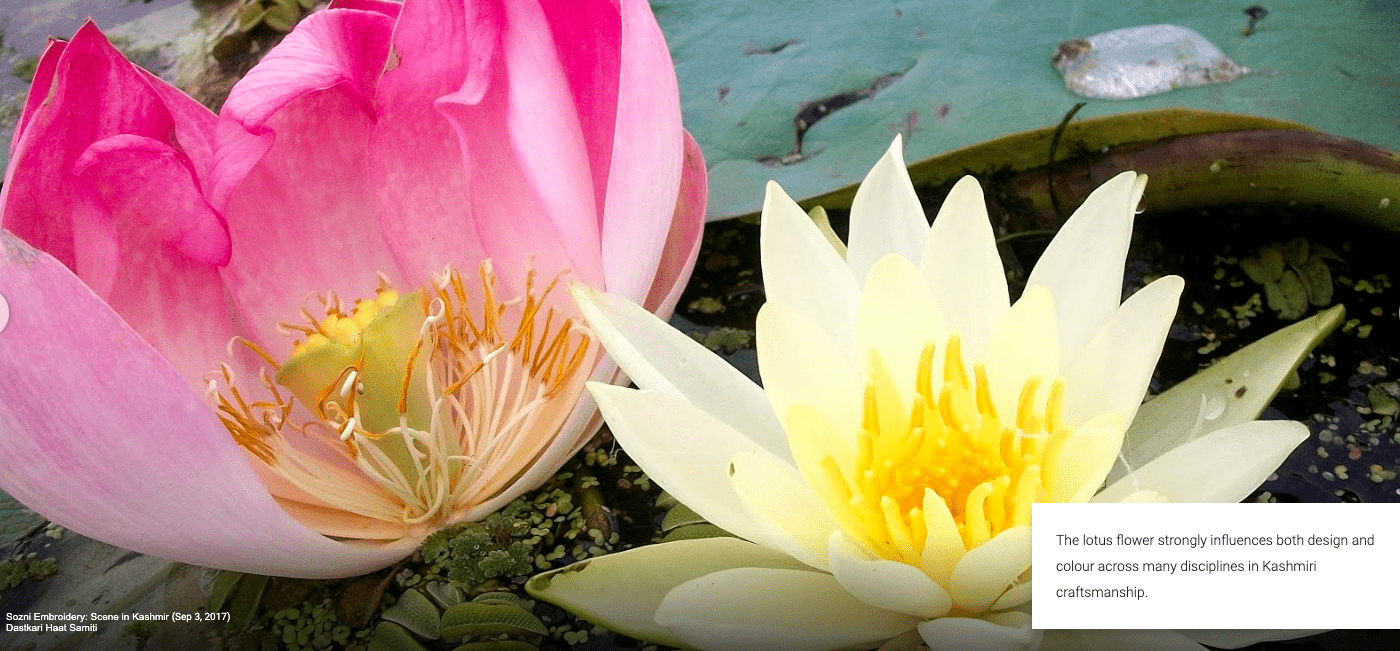
In the last few months, I got a chance to speak with many artisan families in Kashmir, who have been working in textiles for generations. It is very fascinating for me to hear about their unique stories. And I feel very grateful to share below a little information on the embroideries from Kashmir.

EMBROIDERIES OF KASHMIR
The word Kashidakari is used for Kashmiri embroideries. It is derived from the Persian words ‘Kashida,’ meaning free-flowing cursive writing, and ‘Kari,’ meaning craftsmanship.
Historically, the use of embroideries in Kashmir started as the twill tapestry weaving of decorated pashmina shawls by the high-skilled kanikar weavers was very time-consuming. Kanikar comes from the word Kani, meaning shuttle. The twill tapestry weaving technique sometimes requires 40 to 50 shuttles based on the intricacy of designs and colors used.
Read More
PAISLEY A GENUINELY GLOBAL MOTIF IN THE DESIGN WORLD
BEGINNING OF THE EMBROIDERIES OF KASHMIR
As per the legends, the direction for the first-ever Amlikar or embroidery shawl came from an Afghani Rafoogar or darner in India called Ali-Baba when he used his darning stitches to fill the imprints of a fowl’s feet with colorful threads to create a beautiful effect. This story belongs to the time of Mughal rule in India. At the start of the embroidery tradition of Kashmir shawls by the Rofoogars or darners, there were only a few darners with the necessary skills to embroider the shawls. However, with time as Kashmir shawls gained popularity, the number of embroiders increased and prospered. Today, Kashmir embroidery is not just limited to rafoogar stitches. Various techniques are practiced to adorn the gorgeous shawls and other objects of beauty in home and fashion.
Let us look at the TYPES OF EMBROIDERIES OF KASHMIR
SOZNI EMBROIDERY
Sozni comes from the word Sozan meaning fine needle. It is one of the finest needlework embroidery done with a silk thread using fine satin stitches as the base stitches, which are worked on both the sides of the cloth and are then covered by a series and variety of overlay stitches to completely fill the motifs. The skilled sozni embroider is respectfully referred to as Sozankar.
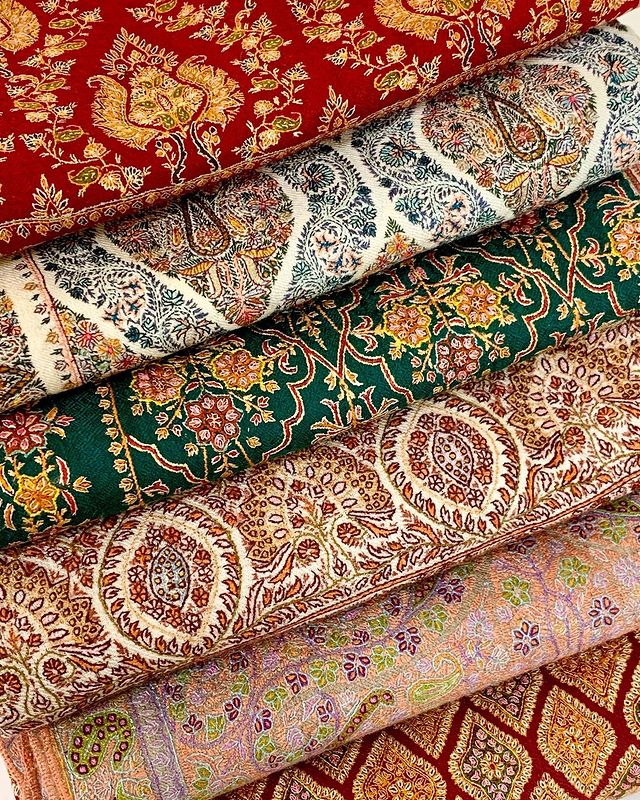
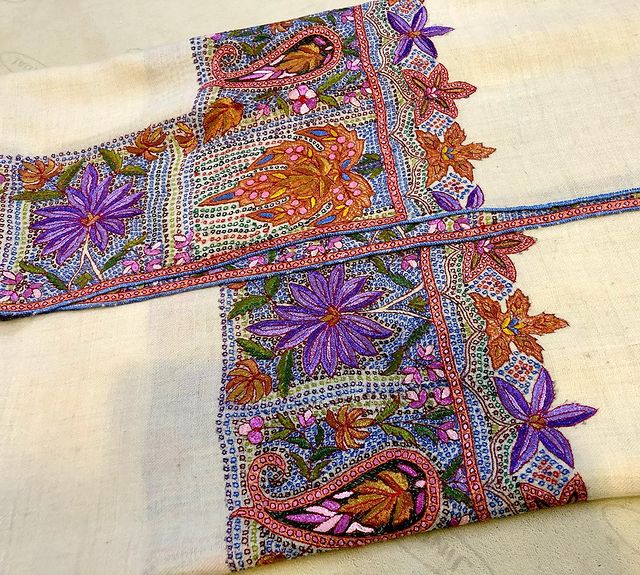
Chikandozi is a medium-fine needlework
Rezkar is similar to sozni embroidery however it uses broader satin stitches in multiple colors. And it is not reinforced with additional stitches.

Tilla Embroidery is done with golden or silver threads. Zari (tilla) and silk threads (dori). The gilded metallic threads are placed on the surface of the fabric (mostly pashmina) in the form of decorative loops to create raised patterns. The gilded threads are secured to the surface with cotton or silk stitches. Tilla work is an expensive and opulent embroidery due to the exclusive raw material and technique required to develop it.
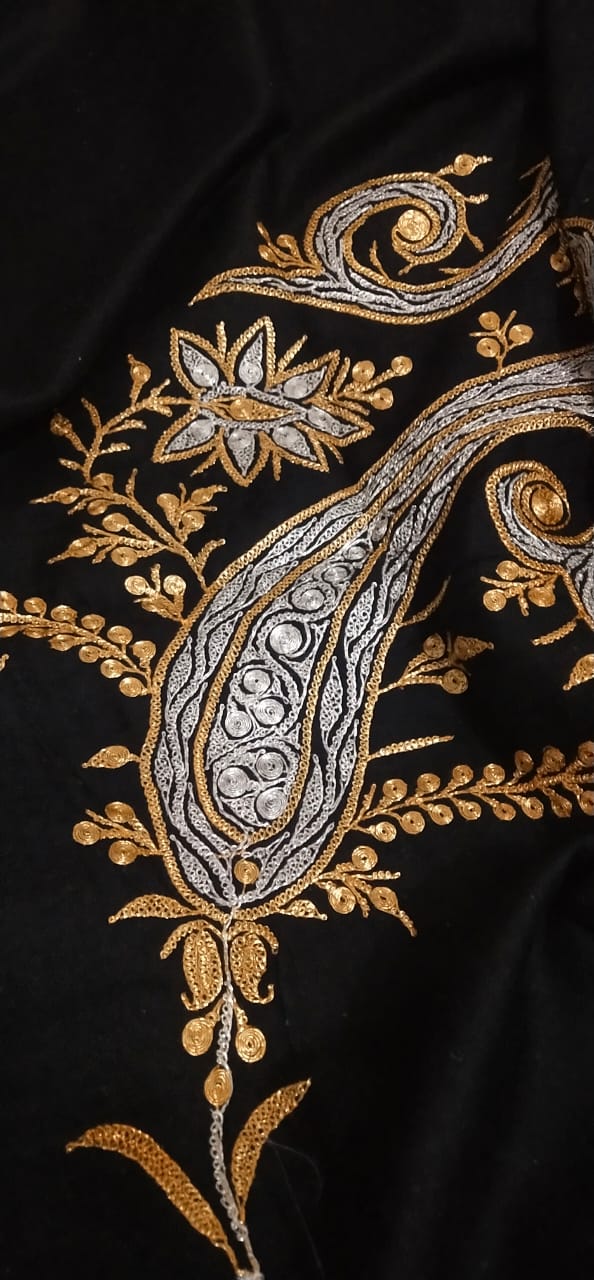
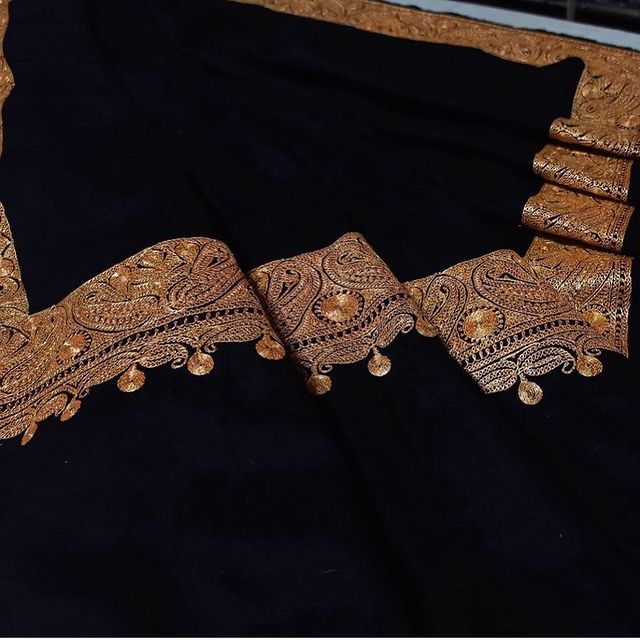
Jalakdozi or Crewel Work– The word crewel is said to have been derived from the medieval Welsh word, ‘Krua,’ meaning wool. Since crewel embroidery in Kashmir is practiced using a heavy wool yarn on an aari (hook) needle that makes beautiful chain stitches.
The crewel embroidery from Kashmir became very famous during British rule in India. As a matter of fact, the British commissioned the manufacturing of steel aari needles in large quantities that were then used to create crewel embroidery on all kinds of objects of beauty. All the major check-points on the Silk Road were familiar with Kashmiri crewel embroidery.


Other terms commonly used with respect to the Kashmiri designs-
Jamawar Patterns- A Kashmir shawl covered in an overall pattern
Jalidar Designs-Jali means mesh or a net. A design with a net-like look.
Khatraash- Kashmiri shawl designs with straight or diagonal lines.
Dordar Khurd-The 2″ to 3″ embroidered borders of the Kashmir shawl
Bootidar-Filled with booti or paisleys
Chaarbadam- A motif with 4 (chaar) paisleys arranged in various stylistic forms.
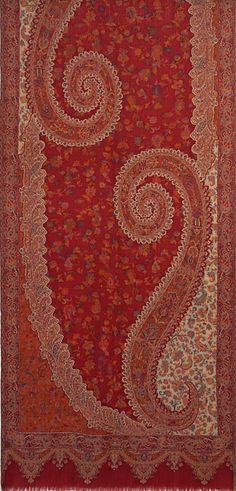
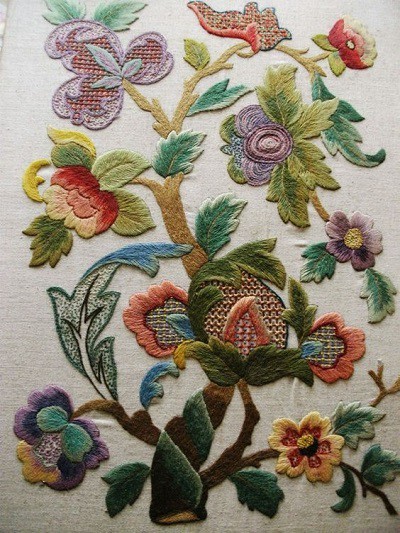
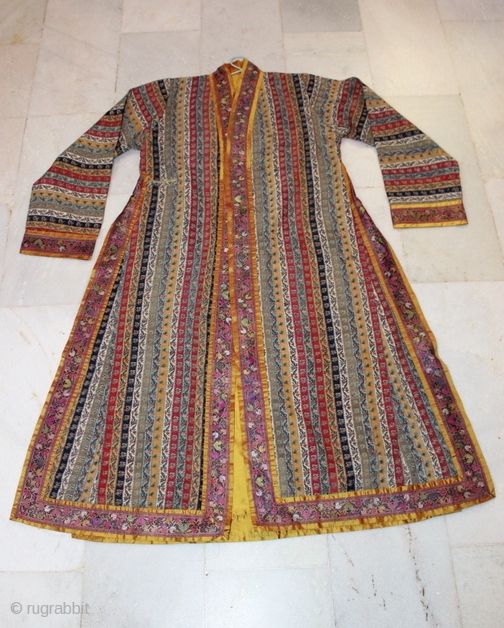

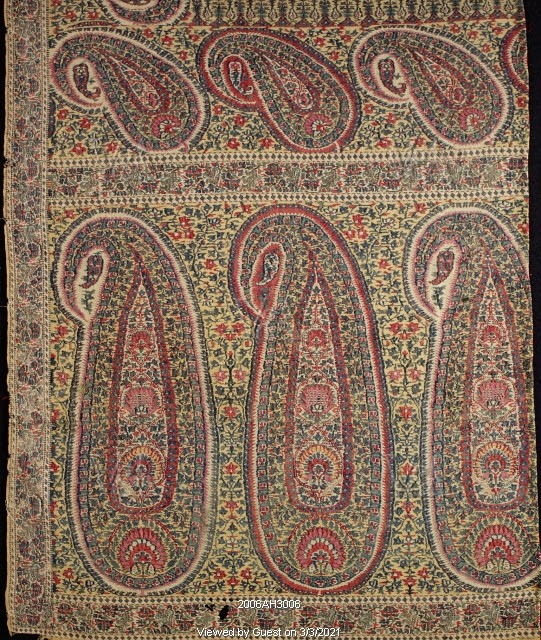
When the embroidery pattern is single-sided, it is called ‘Aksi’, while a pattern laid out on both sides is called ‘Dorukha’.
Aptly described as ‘painting by needle’ embroidery is one of the biggest cottage industry craft in the Kashmir valley. We will share more information on the crafts of Kashmir in our upcoming posts.
ABOUT THE AUTHOR
 Nidhi Garg Allen is an alumnus of Parsons School of Design and Adjunct Professor at the Fashion Institute of Technology. She is a technologist turned artisan entrepreneur and the founder and CEO of Marasim. Marasim based in NYC is committed to preserving artisanal textiles that make use of regional techniques without uprooting craftspeople from their native communities
Nidhi Garg Allen is an alumnus of Parsons School of Design and Adjunct Professor at the Fashion Institute of Technology. She is a technologist turned artisan entrepreneur and the founder and CEO of Marasim. Marasim based in NYC is committed to preserving artisanal textiles that make use of regional techniques without uprooting craftspeople from their native communities



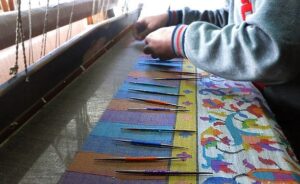
Αγγελική Συμεωνίδου
Posted at 20:11h, 04 MarchΕξαιρετικά εργόχειρα με άπειρες ώρες εργασίας. Μου αρέσουν πολύ.
Nidhi Garg
Posted at 13:18h, 06 MarchThank You Angelik. Sharing English translation of your comment
Excellent handicrafts with infinite working hours. I like them a lot.
Gaye Elder
Posted at 16:04h, 05 MarchThank you for the information and the beautiful examples.
Nidhi Garg
Posted at 13:18h, 06 MarchThank You Gaye